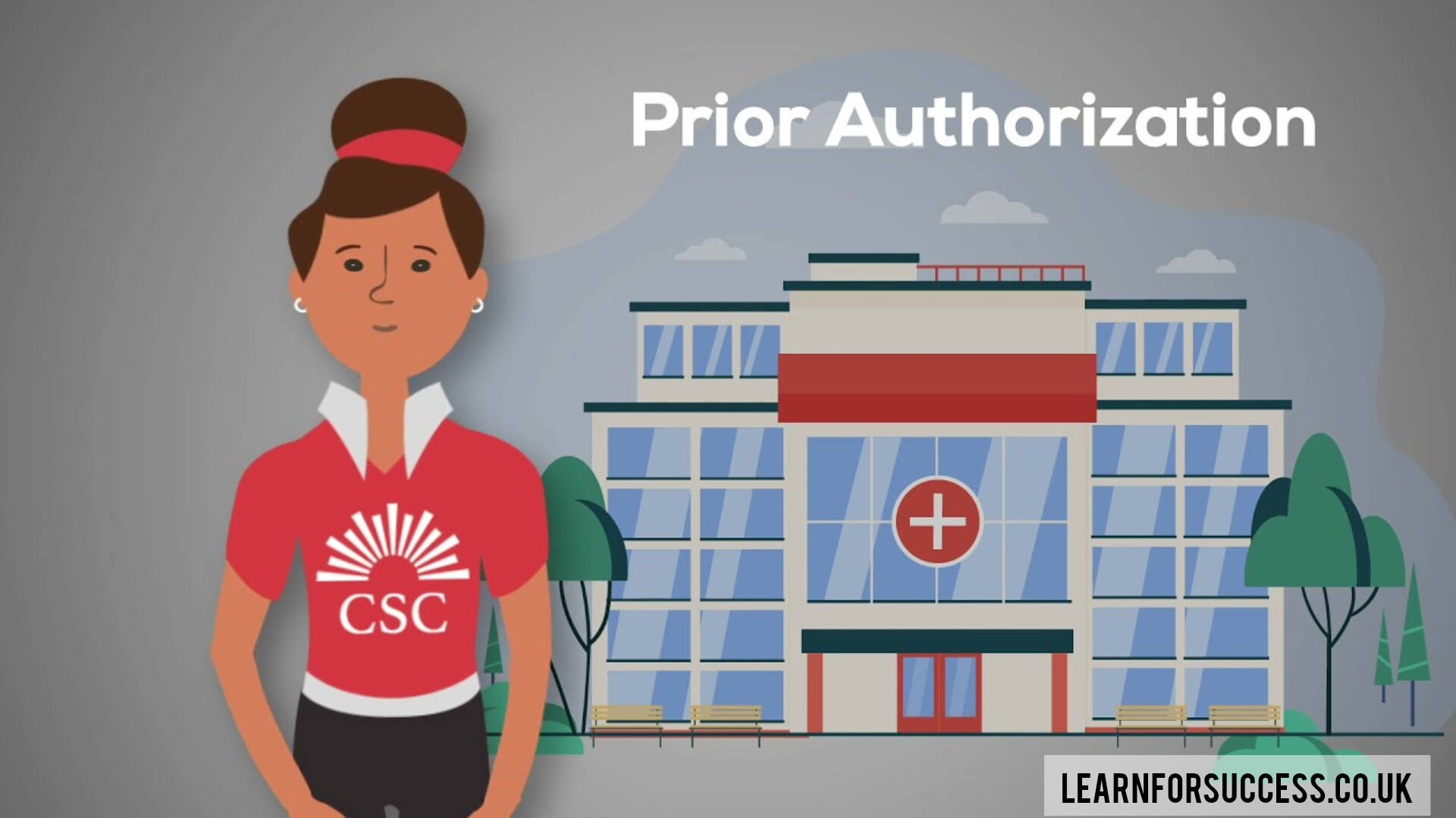The Benefits of Virtual Prior Authorization in Reducing Administrative Burdens
In today’s healthcare environment, efficiency is paramount for both providers and patients. A significant challenge to achieving this efficiency is the administrative burden that often accompanies the prior authorization (PA) process. Traditionally, prior authorization has been a labor-intensive process, requiring clinicians to fill out paperwork, submit forms, and make follow-up calls to insurance companies. This not only leads to delays in patient care but also consumes valuable time that could be better spent on direct patient interactions. Fortunately, virtual prior authorization offers a solution that streamlines the process, reduces administrative burdens, and improves overall healthcare delivery.
Understanding the Traditional Administrative Burdens of Prior Authorization
Prior authorization is an essential aspect of healthcare reimbursement, designed to ensure that prescribed treatments and medications are medically necessary and cost-effective. While the intent behind PA is to safeguard both patients and insurers, the execution of this process has historically been time-consuming and inefficient.
Time-Consuming Manual Processes
Dealing with authorization can be quite a hassle due to the heavy reliance on manual procedures in the healthcare sector. Staff members have to fill out forms and submit records while engaging in back-and-forth communication with insurance companies using outdated equipment, like fax machines. This not only leads to challenges but also raises the chances of mistakes or delays occurring.
Doctors and their team dedicate around 16 hours every week to handling authorization duties as, per research findings—translating to two entire workdays consumed by administrative responsibilities instead of directly tending to patients’ needs and well-being—an exhaustive routine that may contribute to physician fatigue and staff dissatisfaction while ultimately impacting patient contentment adversely.
Communication Challenges
Another significant issue with the traditional prior authorization process is the lack of streamlined communication between healthcare providers and insurance companies. Providers often have to deal with long wait times on the phone or resubmit requests due to missing or incomplete information. This back-and-forth process creates further delays, leading to frustrations for both healthcare professionals and patients waiting for approval to proceed with treatment.
Increased Error Rates
The complexity of managing prior authorizations across multiple insurance companies with varying requirements further contributes to administrative strain. Each payer may have different criteria, forms, and submission methods, which increases the chances of errors. Mistakes in paperwork or missing information can lead to denials or the need for resubmission, delaying care and increasing workload.
The Impact of Administrative Burden on Healthcare Providers
The administrative burden created by prior authorization processes has a direct impact on healthcare providers in several key areas:
Physician Burnout
One of the most significant consequences of excessive administrative tasks is physician burnout. According to numerous studies, the growing demands of documentation and paperwork contribute to increased stress and job dissatisfaction among healthcare professionals. This burnout can negatively affect the quality of care and the overall well-being of healthcare providers.
Reduced Patient Interaction Time
When healthcare providers spend substantial time managing administrative tasks, the time available for direct patient care diminishes. This reduced face-to-face interaction not only affects the quality of care but also diminishes the patient experience. Many patients feel that they receive less attention from their providers because of the overwhelming administrative workload.
Financial Implications
The time spent on prior authorization also has financial consequences for healthcare organizations. Administrative inefficiencies translate to lost revenue, as time that could be spent on billable patient care is instead consumed by non-reimbursable tasks. Additionally, delayed treatments due to authorization challenges can result in higher costs, as untreated conditions may escalate, requiring more complex and costly interventions.
How Virtual Prior Authorization Reduces Administrative Burden
Virtual prior authorization addresses the challenges of traditional PA processes by streamlining and automating much of the workflow. This results in fewer manual tasks, reduced errors, and faster approval times. Here are the key ways in which virtual prior authorization reduces administrative burdens in healthcare:
Automated Submission and Processing
Virtual prior authorization offers an advantage by automating manual tasks in the process. In systems, medical professionals can conveniently submit PA requests directly through their health record (EHR) systems without the hassle of dealing with paper forms, faxes, or phone calls. This automated approach does not expedite the submission process. Also minimizes the likelihood of mistakes or missing paperwork.
Through the use of platforms that seamlessly connect with systems in place within the healthcare industry, providers are able to automatically create prior authorization requests by utilizing patient information already present in the Electronic Health Record (EHR). This streamlines the process by eliminating data input tasks, thus saving time for staff members and minimizing the potential for errors caused by human oversight.
Real-Time Approvals
Virtual prior authorization platforms often provide real-time or near-instant responses for certain medications and procedures. Instead of waiting days or weeks for approval, providers can receive confirmation within minutes. This acceleration of the approval process benefits both healthcare providers and patients by reducing delays and enabling timely access to necessary treatments.
For example, if a physician is prescribing a common medication that typically requires prior authorization, a virtual system can automatically submit the request and provide instant approval if all criteria are met. This real-time feedback not only reduces administrative workload but also improves patient satisfaction by allowing treatments to begin without delay.
Standardized Processes Across Payers
A major challenge in traditional prior authorization is the lack of standardization across different insurance companies. Virtual prior authorization platforms help address this issue by standardizing the process for submitting requests, regardless of the payer. These platforms typically offer templates and forms that are compatible with various insurance requirements, allowing healthcare providers to submit accurate requests quickly and efficiently.
Enhanced Communication and Tracking
Virtual prior authorization platforms facilitate better communication between healthcare providers and payers. Rather than relying on phone calls and faxes, these systems offer a centralized portal where providers can track the status of their requests in real time. If additional information is needed, the system alerts the provider, ensuring that requests are not unnecessarily delayed due to missing documentation.
Additionally, having all prior authorization requests in one digital platform allows healthcare staff to easily manage and organize submissions, track approvals, and address any issues that may arise without juggling multiple systems or losing critical information.
Reduced Denials and Resubmissions
One of the main reasons for delays in the prior authorization process is the submission of incomplete or incorrect information. Virtual prior authorization platforms are designed to reduce this issue by ensuring that all required data is provided upfront. Many platforms include validation features that check for missing or incorrect information before submitting the request, thus reducing the likelihood of denials or the need for resubmissions.
By reducing errors, virtual prior authorization ensures that healthcare providers can spend less time fixing mistakes and more time focusing on patient care. Additionally, fewer denials mean patients experience fewer delays in receiving the treatments they need.
The Patient-Centered Benefits of Reducing Administrative Burden
While the primary focus of virtual prior authorization is reducing administrative burdens for healthcare providers, patients also benefit significantly from this streamlined approach.
Faster Access to Care
When prior authorization is handled more efficiently, patients can access the treatments they need more quickly. This is especially important for patients dealing with chronic conditions, where delays in medication or treatment can have serious health consequences. With virtual prior authorization, patients experience fewer interruptions in care, resulting in better health outcomes and improved quality of life.
Increased Patient Satisfaction
Patients often become frustrated by the delays and uncertainties caused by traditional prior authorization processes. Long wait times for treatment approval can lead to anxiety and dissatisfaction with their overall healthcare experience. By adopting virtual prior authorization, healthcare providers can offer a smoother, more transparent process that keeps patients informed and reduces waiting times, ultimately improving their satisfaction.
Better Continuity of Care
Patients with chronic or ongoing conditions often require frequent prior authorizations for medications or treatments. Virtual prior authorization systems help ensure that these requests are processed quickly and accurately, allowing patients to maintain continuity in their care without unnecessary interruptions. This is especially beneficial for patients managing conditions like diabetes, asthma, or autoimmune disorders, where timely access to treatment is critical.
Conclusion
The administrative burden of traditional prior authorization processes has long been a pain point for healthcare providers, leading to inefficiencies, delays in care, and increased costs. However, with the adoption of virtual prior authorization, healthcare practices can streamline these tasks, reduce errors, and improve both provider and patient satisfaction. By automating submission processes, facilitating real-time approvals, and enhancing communication, virtual prior authorization reduces the workload on healthcare staff and enables them to focus on what matters most—delivering high-quality care to their patients.
In this evolving healthcare landscape, solutions like DocVA are playing a pivotal role in simplifying prior authorization processes. By reducing administrative burdens and improving operational efficiency, healthcare organizations can create a more patient-centered experience while enhancing the overall quality of care.
Also Read Learnforsuccess














Post Comment